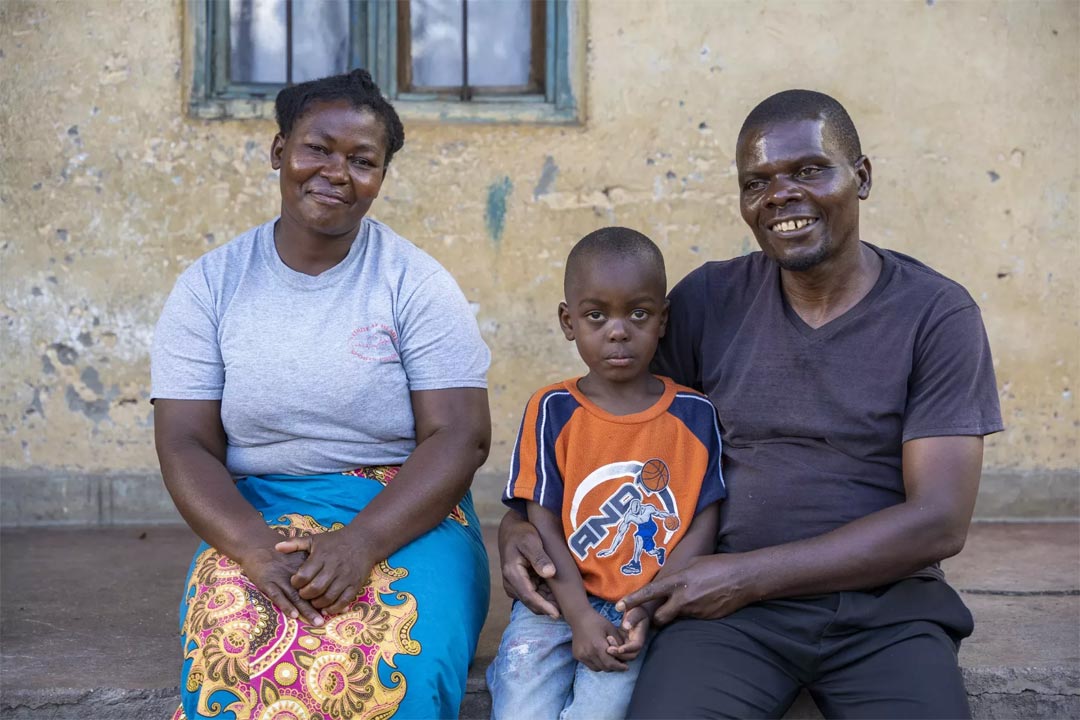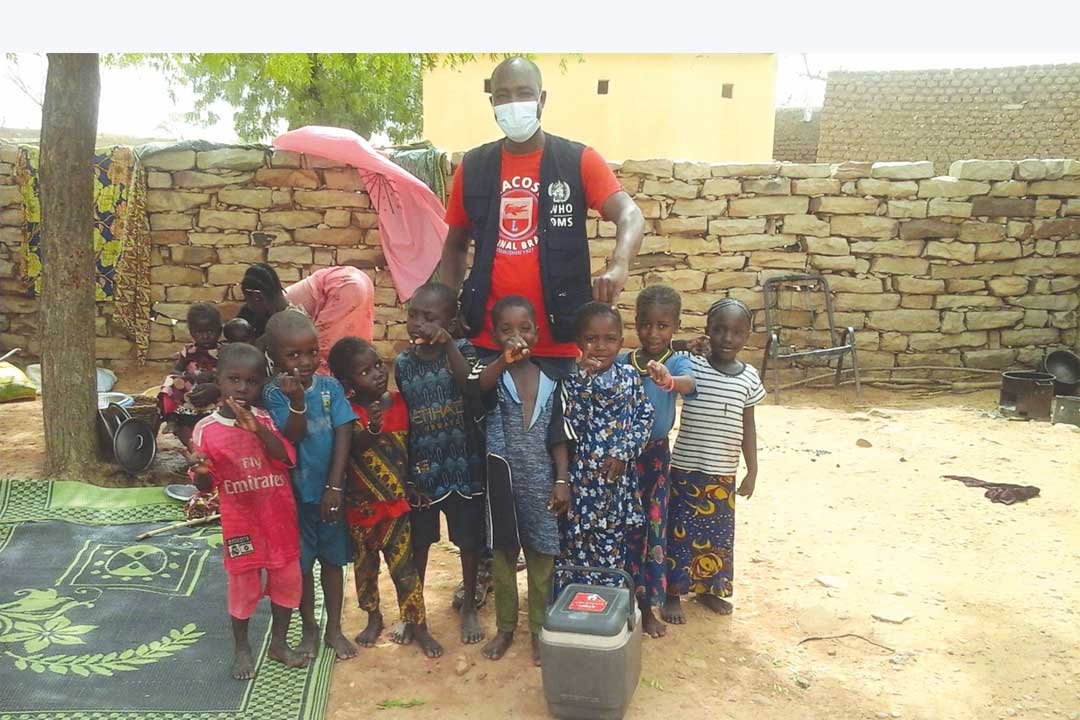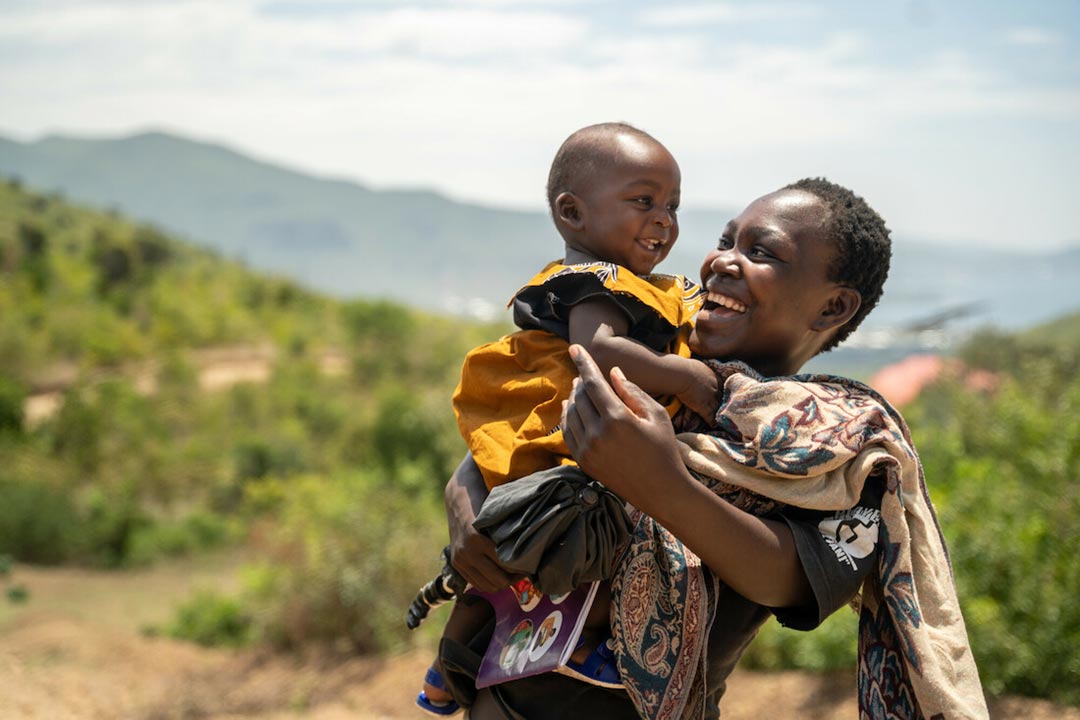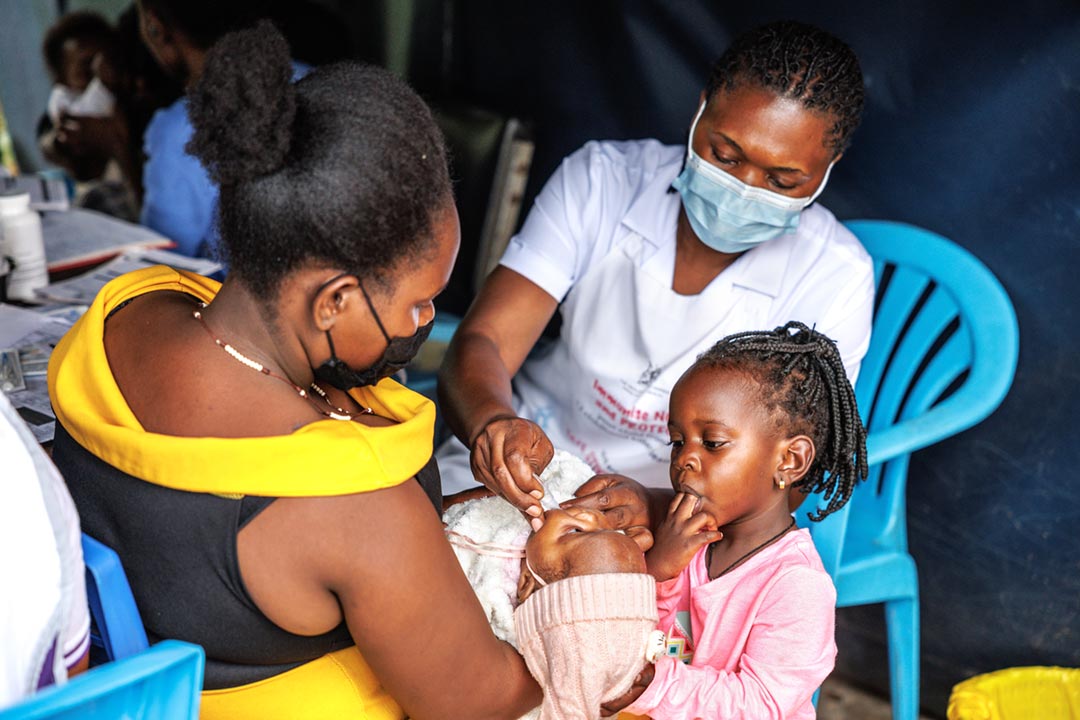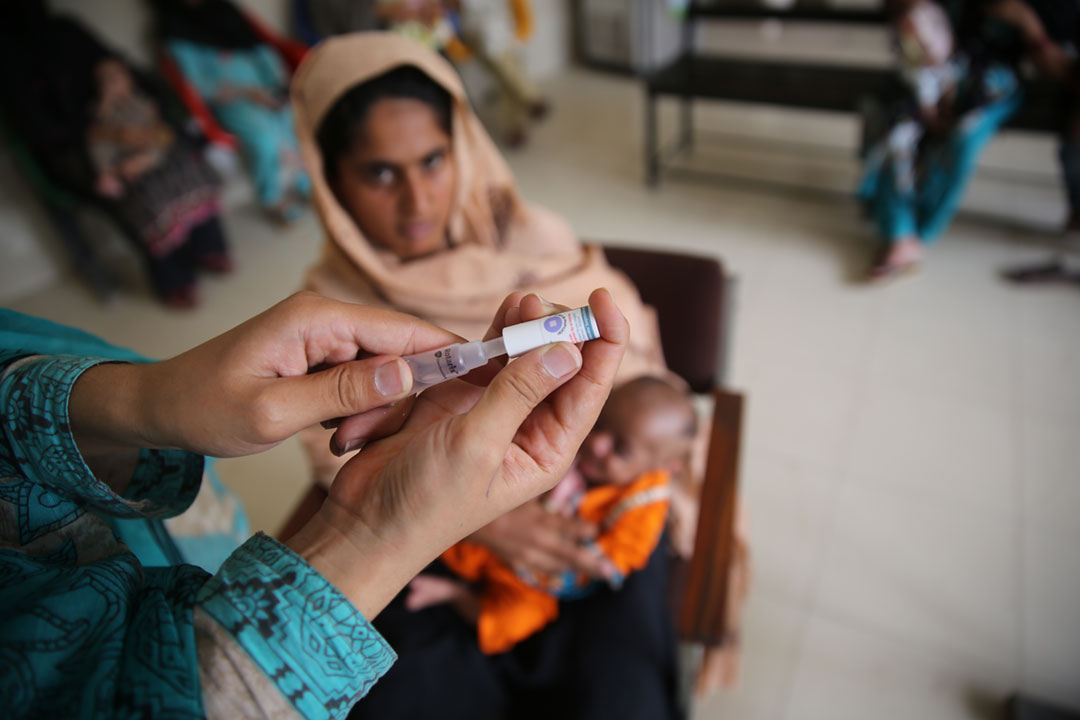Vaccination and supportive care stave off deaths in Ugandan measles outbreak
With a sizeable cohort of unimmunised children built up over years, the measles epidemic is expected to grow among communities lining the lakeshore in Hoima district.
- 15 March 2024
- 6 min read
- by Dicta Asiimwe

Scovia Bero's face is drawn. Her breasts are swollen and painful. She has just lost her 14-month-old baby to the ongoing measles outbreak in Hoima district, located on Uganda's border with the Democratic Republic of the Congo (DRC).
Bero is sitting in the dirt under a neem tree in Runga fishing village, on the shores of Lake Albert, when VaccinesWork first meets her. Spotting visitors, the four women sitting with Bero head off in different directions to their respective huts. They return with a narrow bench and a mat made of papyrus reeds.
Sitting on that mat, Bero haltingly narrates, through a translator, how she lost her child on 24 February , after ten days of illness.
“Consistently low coverage rates over the years [means] leaving a significant portion of children unvaccinated. That means that there’s a sizable population for the virus to spread through."
– Catherine Ntabadde, UNICEF
Bero's two children, including the one who died, number among the more than 400 children that authorities in Hoima district have so far registered as having suffered from measles in an outbreak that began in late January this year.
Immunity holes
The outbreak is expected to grow, as experts say that immunity levels in this community are inadequate to halt the spread of the ferociously contagious virus.
"Low population immunity due to failure to vaccinate is the most likely cause of the measles outbreak. Importantly, low population immunity creates favourable conditions for the rapid spread of imported measles infections," says Catherine Ntabadde, a communications specialist for the United Nations Children's Fund (UNICEF).
Data from the Ministry of Health's Health Management Information System (HMIS) shows that in 2023, 7% of 2 million Ugandan children under the age of one missed their measles-rubella (MR) vaccination.
In, Hoima, however, the proportion of children that missed their measles rubella vaccine was significantly higher than the national average.
In recent years, Hoima district has seen fluctuating coverage of the first dose of MR vaccine – termed MR1 – which is conventionally given to children aged nine months. In 2021, just 75% of children in Hoima received the MR1 injection. There was a significant increase to 109% in 2022 – a figure which sounds uncanny, but likely reflects the health system reaching more eligible children than anticipated during planning. But in 2023, coverage plummeted to just 61%. Given how contagious the measles virus is, a 95% vaccination coverage rate is required to head off outbreaks.
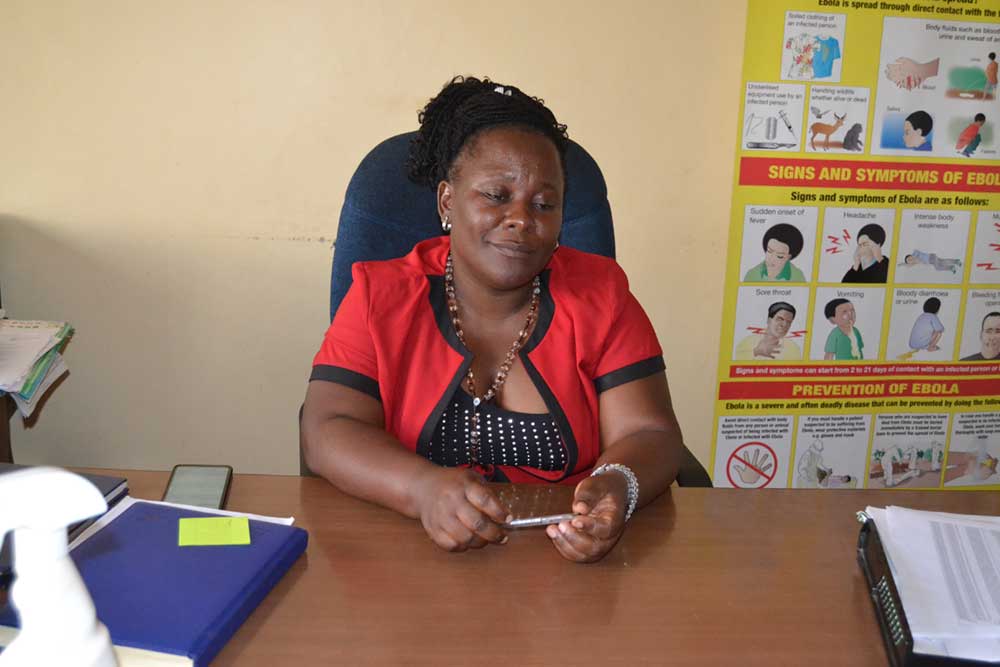
Credit: Dicta Asiimwe
"Consistently low coverage rates over the years [means] leaving a significant portion of children unvaccinated," says Ntabadde. That means that there's a sizable population for the virus to spread through.
"We expect the numbers to increase, as the epi[demic] curve is only starting to rise now," says Nazareth Kabagenyi, the Hoima District Health Officer.
A lonely community
The outbreak, which Uganda officially declared on February 19, after test results from the Uganda Virus Research Institute confirmed measles, has been spreading in communities walled in between the shores of Lake Albert and the Rift Valley precipice. Flooding from the lake has separated these communities from health and social services.
"It is about seven miles [over 11 km] to Kibiro Health Centre, and part of that journey requires travelling on the lake during the rainy season," says Gilbert Opio, the Runga village chairperson.
The government had dug a road to connect the fishing village to the nearest health centre, but in 2020, a flood destroyed it, leaving the community once again cut off.
Runga also grapples with a kind of social isolation. Located in a fractious, mobile portion of the continent, Runga has become a temporary home to many Luo immigrants from northern Uganda and eastern DRC. But in this part of western Uganda, the ethnically Bantu majority is said to often ignore newcomers.
This layered isolation, taken together with the habitually transient nature of the lakeshore community, has contributed to a large section of the children here remaining unimmunised, says Rashida Kabasindi a member of the local village health team (VHT).
Opio, the chairperson, adds that despite having a population of 13,376 living in his village, there are no government schools here. The ones built by the community are sub-standard, with several different classes taught by one teacher in the same room.
And, with most mothers here largely lacking an education, many have neglected to vaccinate their children.
Have you read?
Moreover, according to Kabagenyi, that lack of health education also meant that many mothers did not quickly take their children to seek medical care when they began to show symptoms of measles.
"You know, it is windy right now, so the community thought the illness and death of some children was due to ghosts on the lake," says Kabagenyi.
Change, after loss
Kabagenyi says that Hoima district, which has sought material support from different non-governmental agencies, is now investing in education of the community, to encourage parents to seek out health services. This has helped, she thinks, to slow the rate of death.
Since the outbreak began, three children, including Bero's baby, have died.
Although she delayed in taking her child to the hospital, the 23-year-old Bero, whose eyes are teary throughout our interview, says she sought medical treatment when she realised that the baby's illness was more complicated than a simple cough.
Her daughter's illness started with a cough, she said, and then it was a rash, a high temperature, and a red mouth and eyes. The child stopped eating.
"When the temperature increased, I took her to a health facility, but my baby died anyway," Bero says.
It has also helped that parents who vaccinated their children before the outbreak were able to observe the difference in the seriousness of illness among those that are unvaccinated.
Bero, whose parents, siblings and in-laws live in the DRC, says she had not realised it was measles, or that it was so serious as to lead to death.
Kabagenyi, the district health officer, says that following improved investment in communication, about the importance of immunisation and medical treatment for sick children, more parents are seeking medical intervention for their children.
"We sent over the risk communication team that has talked to the community, and particularly their religious leaders who are important opinion leaders there," says Kabagenyi.
Rosemary Musimenta, a health education officer, adds that the district has also recruited community mobilisers who are immigrants for the measles treatment, case surveillance and immunisation campaign. That's an important improvement from the previous arrangement, where members of the village health team were exclusively Bantu-speaking locals of Hoima.
"We are lucky the mortality rate has been low, and it was mostly at the beginning of the outbreak," says Kabagenyi.
That low mortality rate has allowed trust to grow among the migrant communities that live along the escarpment, largely separated from the rest of Hoima and its indigenous Bantu residents, and health leaders.
Building trust to fuel vaccination
On grounds of that newfound trust, Kabagenyi says the district has been able to organise successful vaccination drives.
"We organised vaccination, and spent there three days in the greater Kigolobya and Buseluka areas along the escarpment," she says.
Hoima district officials have so far used all 4,000 doses of the measles vaccines they had in stock, and are now waiting for a fresh batch.
It has also helped that parents who vaccinated their children before the outbreak were able to observe the difference in the seriousness of illness among those that are unvaccinated.
Pasca Adokirwot, one of those parents that is now convinced that vaccines work, says only one of her two children had previously been vaccinated.
"The one who was immunised got measles and brushed it off quickly," she says. Adokirwot then points to her unimmunised son, who even after the mother thought he had healed, still struggles to eat, and remains sickly.
More from Dicta Asiimwe
Recommended for you
